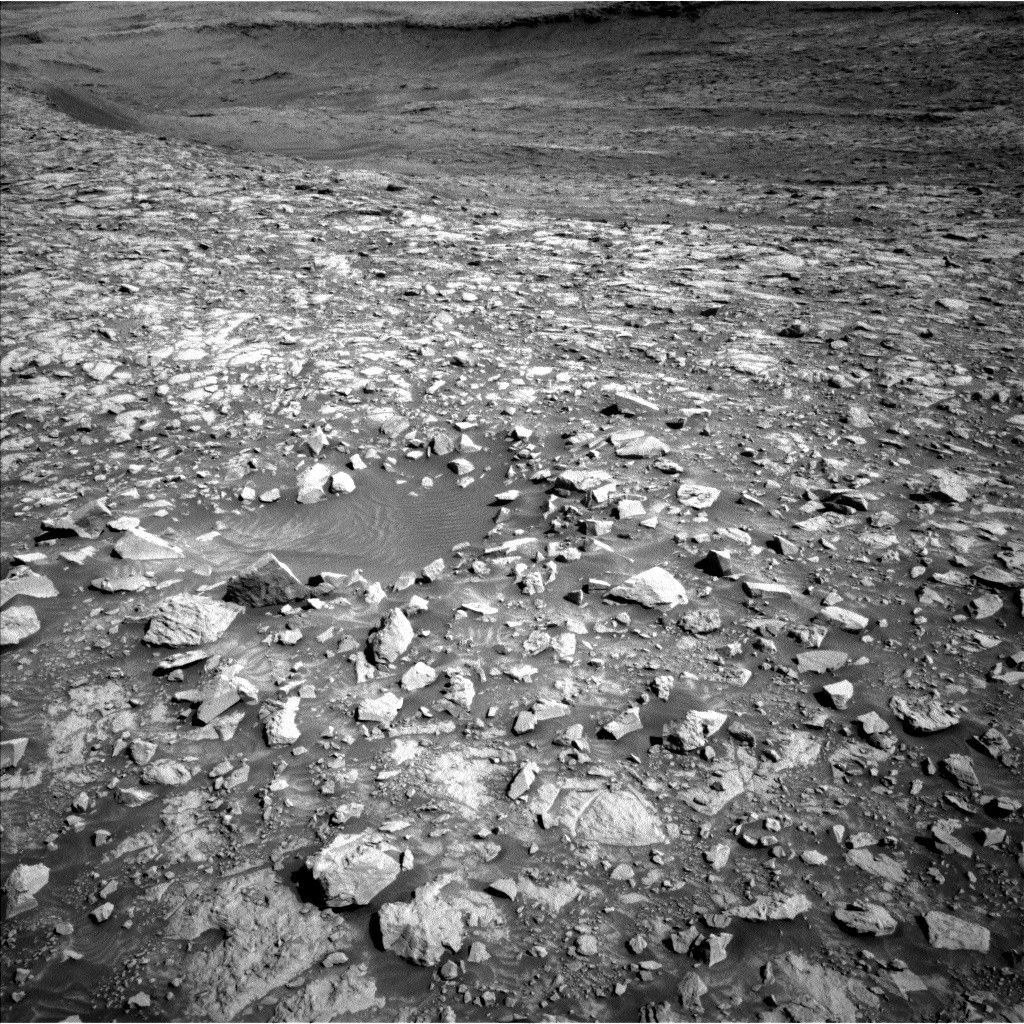- Curiosity Home
- Science
- News and Features
- Multimedia
- Mars Missions
- Mars Home
3 min read

Written by Ashley Stroupe, Mission Operations Engineer at NASA's Jet Propulsion Laboratory
Earth planning date: Wednesday, July 9, 2025
In today's plan, we have a little bit of everything. With it being winter still, we are taking advantage of the ability to let the rover sleep in, doing most of the activities in the afternoon when it is warmer and we need less heating. As the Systems Engineer (Engineering Uplink Lead) today, I sequenced the needed heating and some other engineering housekeeping activities.
We start off with an extensive remote science block with Mastcam imaging of a nearby trough to look for potential sand activity. There is color imaging of a displaced block, "Ouro," near a circular depression - could this be a small crater? Mastcam also takes a look at a ridge "Volcán Peña Blanca" to look at the sedimentary structures, which may provide insights into its formation. ChemCam LIBS and Mastcam team up to look at the "Los Andes" target, which is the dark face of a nearby piece of exposed bedrock. ChemCam RMI and Mastcam check out a distant small outcrop to examine the geometry of the layers. We also throw in environmental observations, a Mastcam solar Tau and a Navcam line-of-site looking at dust in the atmosphere. After a nap, Curiosity will be doing some contact science activities on "Cataratas del Jardín" and "Rio Ivirizu" bedrock targets. Looking at two nearby targets for variability can help us understand the local geology. Cataratas del Jardín gets a brushing to clear away the dust before both targets are examined by MAHLI and APXS. Fortunately for the Arm Rover Planner, both of these targets are fairly flat and easy to reach. Before going to sleep for the night, Curiosity will stow the arm to be ready for driving on the next sol.On the second sol, there is more remote science. ChemCam LIBS and Mastcam will examine "Torotoro," another piece of layered bedrock. ChemCam RMI will take a mosaic of "Paniri," which is an interesting incision in the rock that is filled with another material. There are also environmental observations, a Navcam dust devil survey and a suprahorizon movie. After another nap, Curiosity is getting on the road. We're heading southwest (direction shown in the image) about 50 meters (about 164 feet), but we need to sneak between sandy pits and skirt around some terrain that we can't see behind. The terrain here provides pretty nice driving, though, without a lot of big boulders, steep slopes, or pointy rocks that can poke holes in our wheels. After the standard post-drive imaging for our next plan, there are some Navcam observations to look for clouds and our normal look under the rover with MARDI before Curiosity goes to sleep for the night.






